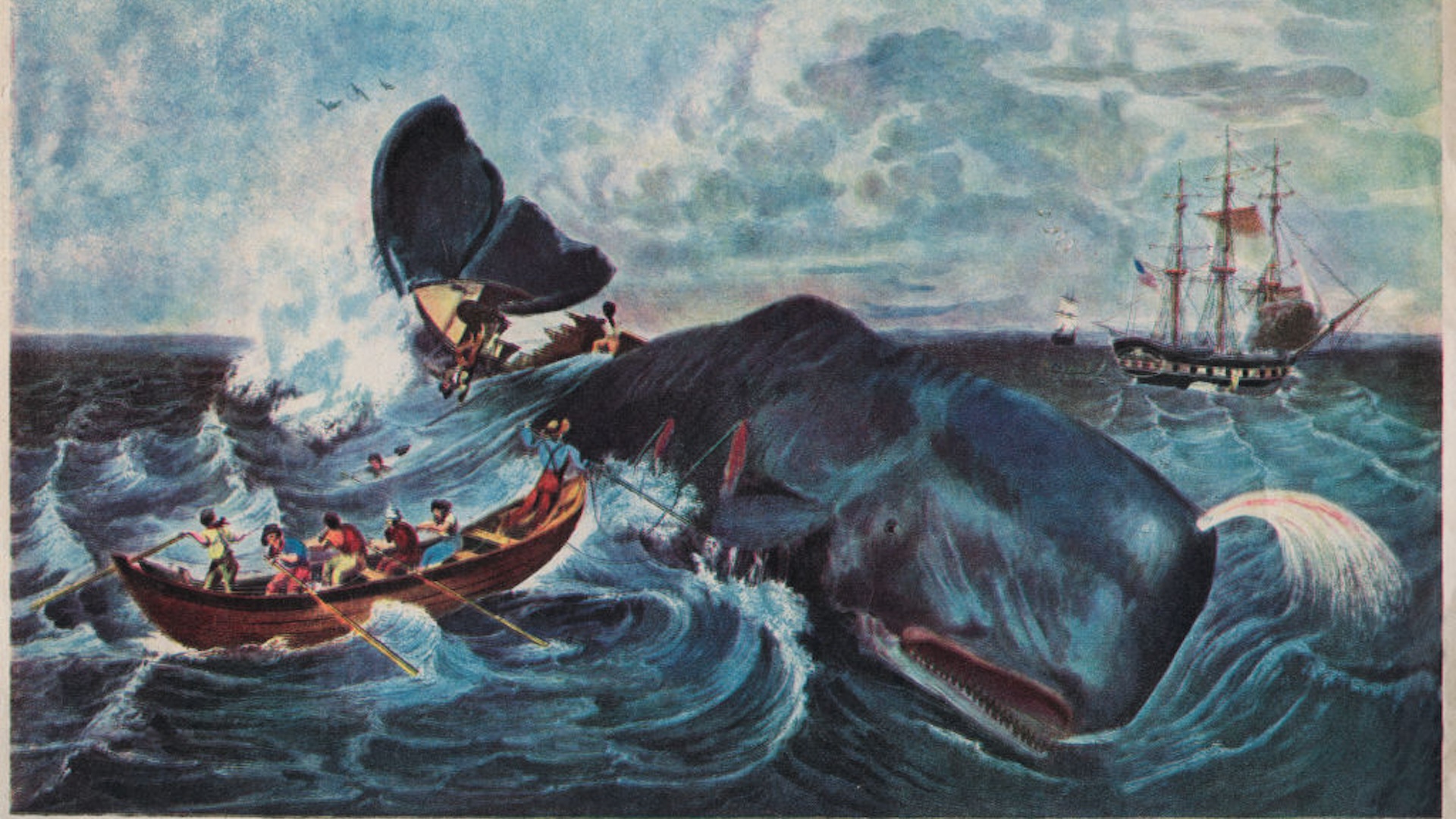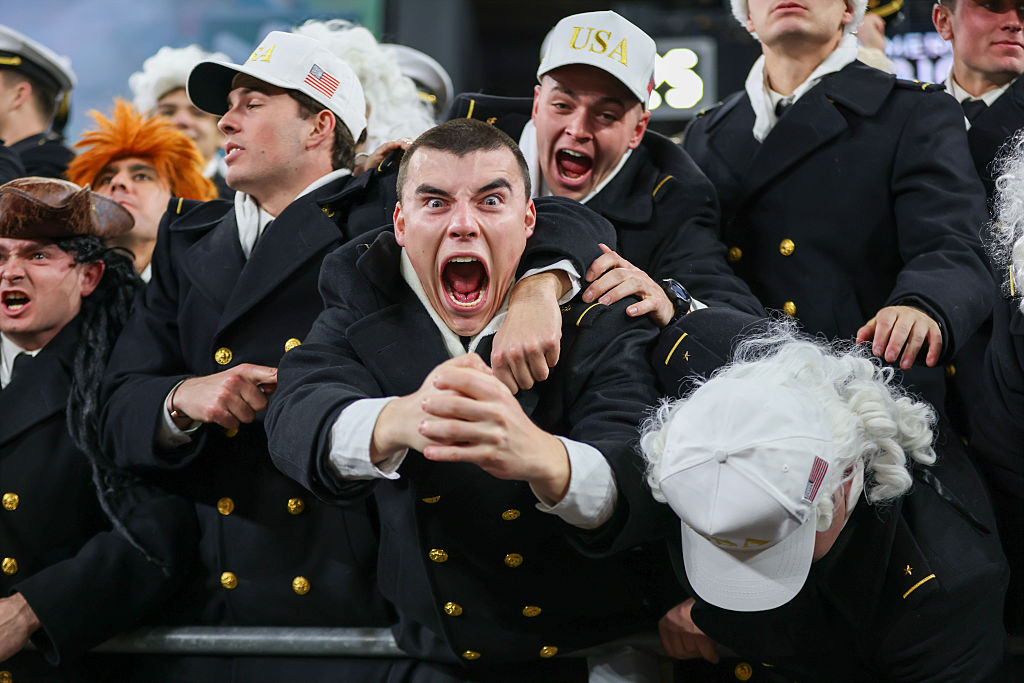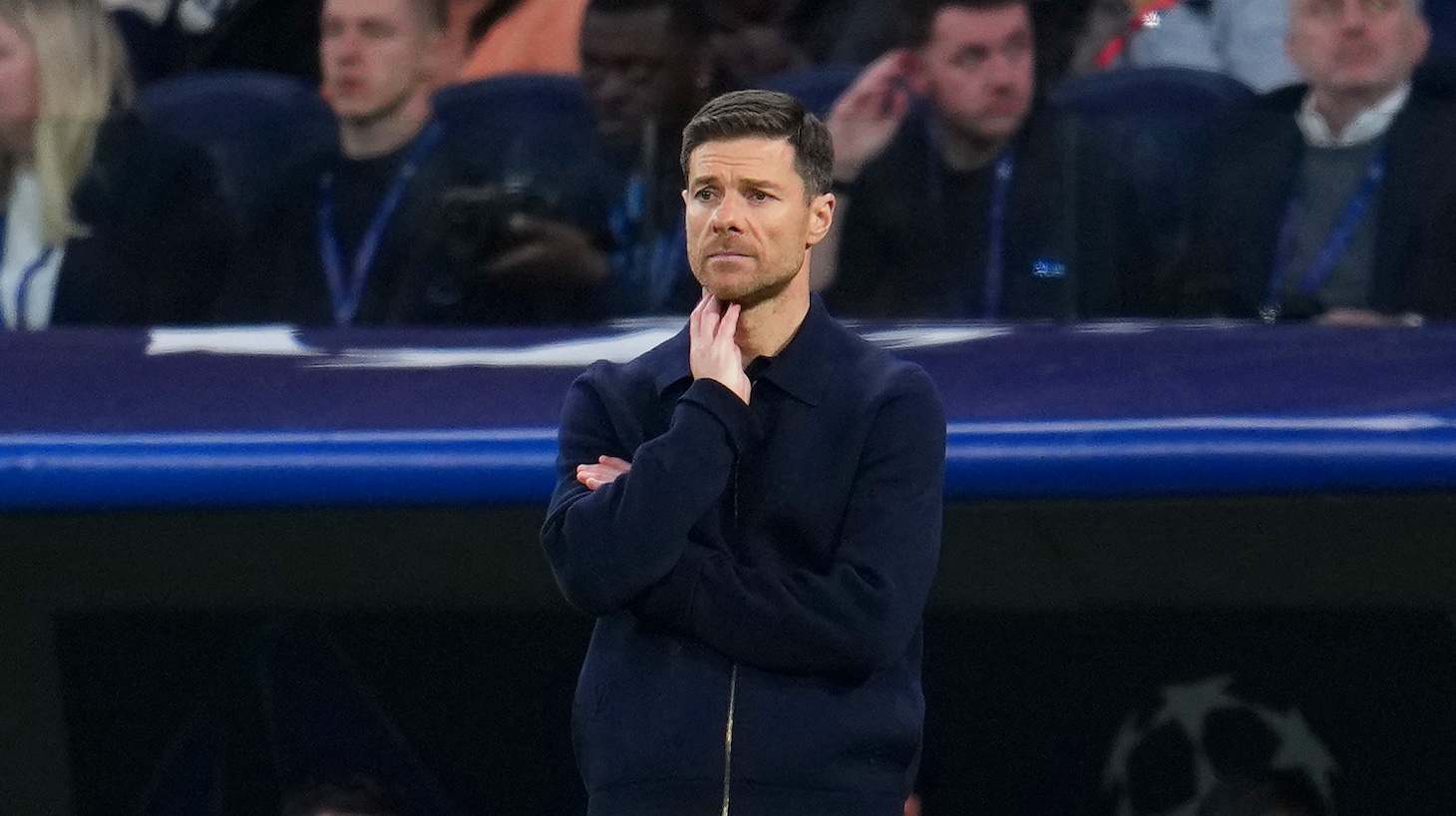I was overly aware of my response the night I saw Moby-Dick at the Met. I don’t know the first thing about opera and, more worryingly, I’ve become known to friends as a person who won’t stop talking about the novel. Some of those people came with me that Saturday night, but no one really knew what to expect.
Moby-Dick, originally adapted for opera in 2010 by composer Jake Heggie, is an American creation that was neither deemed consequential or groundbreaking upon its publication. Demonstrating the lives of many artists before and since, Herman Melville died in relative obscurity and with limited financial resources. The Moby-Dick opera premiered at the Dallas Opera nearly 200 years after the novel’s publication and has since toured around the country, from L.A. to D.C. The libretto is in English and its references, like the novel, pertain to the seafaring culture of northeastern America.
Even if one’s primary associative image of opera and classical music is Amadeus, the elements that make up the Moby-Dick opera would seem bastardized, crude. A stage plus an elaborate set plus someone singing their inner turmoil in English equals musical theater, at least in my mind. Indeed, having only seen one other opera live, Puccini’s Turandot, I have no idea what opera is supposed to sound like, what it’s meant to do, and how. Not that this is a legitimate barrier to entry. The Met’s objective over the last few years has been to get more common folk to engage with the arts, regardless of their familiarity with, say, ballet or the philharmonic. Still, there was something lacking about an operatic Moby-Dick.
Having recently spent the better part of a year reading the novel for the first time, I was enthusiastic about the source material’s potential on such a grand stage. Captain Ahab towers over many of the gnarled, imposing literary figures of American letters, his cantankerous demeanor so melodramatic it makes little sense to imagine him as an ordinary human being speaking ordinary words. There’s the obviously Shakespearean inflection of Melville’s prose, coupled with a healthy dose of Biblical scope. Then there’s the fact that several passages in Moby-Dick are written in a play script format:
[The cabin; by the stern windows; Ahab sitting alone, and gazing out]
“I leave a white and turbid wake; pale waters, paler cheeks, where’er I sail…”
Still, it’s one thing to acknowledge the many reference points Melville pulled from and another to successfully implement them within a more limited formal container. Moby-Dick the opera takes place entirely at sea on the Pequod, the novel’s narrator Ishmael instead anonymized simply as Greenhorn, all extraneous cetological passages and meandering historical digressions excised, the homoerotic elements rife throughout the text dodged in favor of a lackluster representation of masculine camaraderie.
Pip the black cabin boy is portrayed by the stunning soprano Janai Brugger, the only woman in the cast, and yet even this blatant visual depiction of the novel’s obsessive focus on men and the phallic symbolism of whaling dissipates. Foremost among the opera’s strengths, particularly when the narrative began to lag, was the stage design, a large-scale though ultimately minimalist set of striking lines, masts that doubled as projection screens, and dynamic lighting to switch between day and night, rain and fair weather. The masts, often climbed upon by members of the cast throughout the opera, stood at the middle and rear of the stage and also anchored ropes that crossed diagonally over the set. A sloping back wall, studded with rungs, acted as a ramp for the crew to crawl up and slide down during shipwrecks, while a large square middle section of the wall folded out to reveal the burning tryworks where whale carcasses were processed into oil.
In the sense that a big novel necessarily invites an elaborate production, Moby-Dick functions as an adaptation seemingly motivated by meeting base-level expectations, including my suspicion that the opera would be primarily driven by plot. Understandably, a novel whose alternate title is The Whale sets up an expectation of active pursuit, of heightened reality and single-minded preoccupation. Ahab’s is a story of revenge, yes, but also the spiritual cavity that revenge carves within. It’s certainly easier to present Ahab as a tortured soul, hopelessly divided between remorse and anger. Steven Spielberg gets closer to the novel’s complexity, presenting a truncated homage to Moby-Dick in Jaws by intensifying the film’s tense lead-up to the eventual appearance of the mythic, ravenous shark, meanwhile diffusing a malaise and laconic complacency over Amity Island until this sleepy peace is ruptured by blood in the water and the long-simmering mania of Captain Quint. It’s an effective distillation of some of Moby-Dick’s enduring qualities, especially the fact that Robert Shaw’s performance as Quint is so unpredictable.
But it’s not enough for a full-throated adaptation, especially one that’s entering its 15th year in circulation, to hit familiar marks. Grafting a Jaws-like structure onto Moby-Dick, already an anachronistic endeavor, reveals a novice’s understanding of the material. In chapter 41, titled simply “Moby Dick,” Ishamel narrates, “...Ahab had purposely sailed upon the present voyage with the one only and all-engrossing object of hunting the White Whale.”
Taking this to be the novel’s thesis, Heggie and librettist Gene Scheer seem distrustful of the audience’s patience for Ahab’s entrance, the introduction of the titular whale, and the more bizarre philosophical aspects of the novel, particularly Melville’s fixation on the American project, the country’s racial hierarchy, and what exactly the whale represents. As quoted in the Playbill, Heggie looks back at his opera’s legacy saying, “As we watch authoritarian figures rise to power all over the world, I feel Moby-Dick has even more resonance today than it did in 2010.” Ahab as Trump wouldn’t have been my first, second, or third interpretation based on the production I saw. Instead, Heggie envisions Ahab as simply iconic and therefore worthy of attention based on precedent rather than anything specific added to the role.
In my dog-eared Modern Library edition of Moby-Dick, Ahab doesn’t appear until page 175. In the opera, the captain, played by tenor Brandon Jovanovich, limps onstage after about 10 minutes. In short order, he demands fealty from his crew to the tracking and destruction of Moby Dick, resulting in the opera’s one moment of true grandeur, with the cast crying out the mantra “Death to Moby Dick!” as the orchestra churns a dark, symphonic response.
Of course, every adaptation deserves to be taken on its own terms. Stephen King was disappointed by Stanley Kubrick’s interpretation of The Shining, Jeff VanderMeer with Alex Garland’s version of Annihilation. Griping about the differences misses the forest for the trees. At intermission, I wandered around the lobby, sipping water from a paper cone, and asked some strangers what they thought so far. One older man from California said he’d always wanted to read the novel and thought the opera might be a fair introduction. A young woman from Long Island felt Moby-Dick was a little too pedestrian for the Met, but was glad the theater was full. She hadn’t read the novel and didn’t plan to. Meanwhile, I overheard many conversations echoing what I had mentioned to my friends: Maybe this whole thing should have been a musical. Not because a musical is appropriately mainstream or modern, but because the structure of Heggie’s version lends itself well to ensemble numbers, rhyming couplets, and momentous crescendos of feeling with which to end scenes.
Returning to my seat, the second half of Moby-Dick rolled slowly toward an anticlimactic conclusion. Projections used throughout to illustrate the dimensions of the ship and shift the set’s perspective from the deck of the Pequod to overhead views of the whaling boats soon took over the bulk of the effects, rendering the physicality of the props and interactive structures secondary to a bland art installation. Though most of the major characters are present on stage, Heggie drops an ensemble approach for a focused look at Ahab, Starbuck his second in command, and Pip, whose knotted depiction in the novel is as a lingering, ultimately irrevocable force for Ahab’s morality. Such a dangerously representative character is mangled in the opera, through no fault of Brugger’s, by a script that tries to elicit laughs rather than pathos. Copious amounts of Melville’s text are lifted wholesale from the novel and yet, in isolation and sung with odd elongations and pauses, the English syntax only became more and more distracting, cheapening Melville’s florid language.
Tim Burton once described Sweeney Todd: The Demon Barber of Fleet Street as a silent play with music. A similar ethos would have benefitted Moby-Dick, which ends with Greenhorn being asked his name and, like a Marvel postscript, his answer, “Call me Ishmael.” Heggie’s accomplishment, in tandem with the production team, lies with the opera’s music, which manages to communicate a narrative far more esoteric and moving than the pared-down book that follows. I couldn’t shake the sense that, with such a narrow thematic concept in mind, Heggie and Scheer were hesitant to capitulate to Melville’s supreme idiosyncrasy. Moby-Dick is an often ponderous undertaking, made all the more fascinating and resonant for the ethical and metaphysical contradictions its author grapples with, the kind of mythic preoccupations that would seem to lend themselves to the wide canvas opera offers. Perhaps such a vision is out there. Until then, I’m happy to wait and, like the Pequod dragging “a living part of heaven along with her,” return to Melville’s shores.







